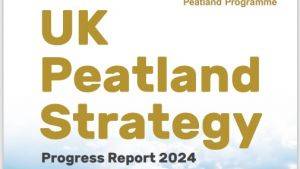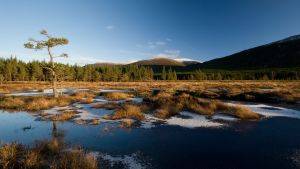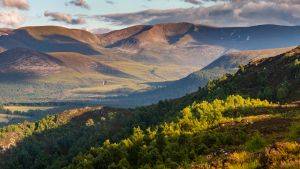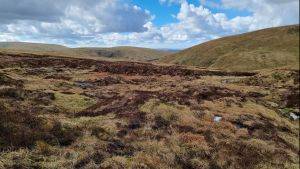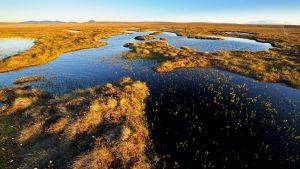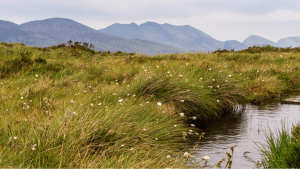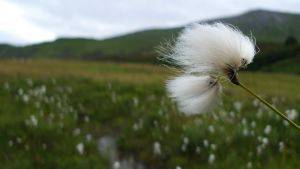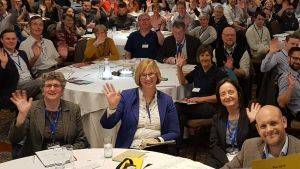Dove Stone
Introduction
In 2010, the RSPB formed a new partnership with United Utilities at Dove Stone in the Peak District in order to improve water quality, carbon stewardship and biodiversity as key objectives of a landscape-scale approach to peatland habitat restoration.
Description
Atmospheric pollution created by industry in the north-west over the last two centuries has left a landscape of extensive bare peat and eroding moorland in the Peak District. The damage at Dove Stone has been further compounded by burning and sheep grazing.
Restoration Delivered
As with many of the Peak District peatland restoration projects, the ongoing restoration at Dove Stone is happening at a huge scale. Over 100 ha of once bare peat have been successfully re-vegetated by the application of heather brash, geojute, grass seed, and a programme of lime and fertiliser application. In addition to these management techniques, grazing has either been reduced or excluded to allow vegetation recovery.
In addition, heather bale and stone gully dams have been installed to help raise the water table and reduce peat erosion.
Site Activity
Sphagnum mosses introduction trials:
Set up in consultation with Natural England, these trials include on-site translocation plus introductions primarily from non-SSSI (Sites of Special Scientific Interest) donor sites in Bowland and the North Pennines, as well as the spreading of nursery-grown Sphagnum beads. Thanks to funding from Natural England and Grantscape, beads, whole clumps and fragmented Sphagnum have been introduced to Sphagnum-free but relatively intact cotton grass dominated blanket bog in a number of trial areas. In addition to the Sphagnum itself, which will hopefully establish and provide a new population and in turn colonise the surrounding area, these introductions will create a suitable habitat for other specialist blanket bog plant and animal species to re-colonise the area. Trials have also taken place on more recently re-vegetated sites and survival rates are being monitored throughout 2012.
Partnership working
In Northern England, United Utilities, working with the RSPB has implemented the Sustainable Catchment Management Project (SCaMP) over a number of upland water catchments, including at Dove Stone. The innovative programme has seen water table restoration and revegetation work across damaged blanket bogs in the UK.
Volunteering
Developing local involvement through volunteering has been an important aspect of the project partnership. Volunteers are currently involved in two aspects of restoration: heather bale installation to raise water tables and trialling different Sphagnum restoration techniques.
Raising water tables is a key target for peatland restoration, and conservation volunteers at Dove Stone are actively creating higher water tables with spade and bale, acting as Ecosystem Engineers for the site. It is hoped that Sphagnum mosses will act as natural “Ecosystem Engineers” by actively creating and maintaining a high water table in their surroundings, as they can store up to 20 times their own weight in water and help keep the bog surface saturated.
Volunteer groups have installed over 1,400 heather bales at Dove Stone over the past year. This work is concentrating on peat pans (relatively flat areas of redeposited peat), where heather bales can significantly raise the water table. If rain follows, new pools are created and surface wetness is retained for long periods.
Project Name: Dove Stone
Organisation / Lead partner: RSPB
Location: Mossley, Greater Manchester
Conservation Status: National Park (NP)
Predominately: Upland
Peat Habitats: Blanket bog
Project Type: Restoration, Management
Year Project Began: 2010

